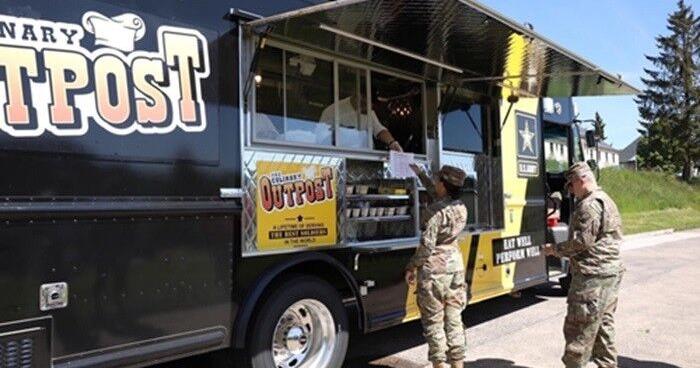
REDSTONE ARSENAL, Ala. — The Army has launched a renewed effort to build a modernized food ecosystem that ensures Soldiers have access to affordable, healthy food options, geared toward how, where, when and what they want to meet their dining needs and preferences.
“The Army has not changed our feeding philosophy in years,” Lt. Gen. Chris Mohan, deputy commander of Army Materiel Command, said. “It’s time to revolutionize the Army’s food service. We need to get after the modernization and change needed to provide a comprehensive and holistic improvement to how we provide food service across the Army.”
As part of the effort, the Army is developing a strategy that will include transformational, continuous, customer-driven solutions to deliver more healthy eating options and increase the health-readiness of the force.
“The old model no longer works,” Sgt. Maj. of the Army Michael Weimer said, speaking with a group of senior enlisted culinary experts Oct. 16 during a virtual Food Modernization Update briefing hosted by Army Materiel Command’s Command Sgt. Maj. Jimmy Sellers. “We need to get creative on how we feed Soldiers in garrison, as well as (during) large-scale combat operations.”
That update focused on the Army’s commitment to improving overall nutrition and to rejuvenate the food service program with convenient and flexible feeding options for Soldiers, such as expanded use of culinary outposts like food trucks and 24-hour self-service kiosks.
An Army Food Program Board of Directors, comprised of general officers from AMC, Combined Arms Support Command and the Army Deputy Chief of Staff Army Logistics, will drive the strategy. Formally established in August, the BOD oversees the Army’s focus areas to modernize food service operations — from field feeding, culinary training and installation food establishments, to policies, regulations and authorities to drive innovation and transformation.
“It’s about getting the right types of food at the right locations,” Mohan said. “We need to build a comprehensive Army food strategy that looks at the entire food ecosystem and all potential options to feed Soldiers.”
To that end, the BOD will send out teams to conduct installation assessments. The first assessment team visited Fort Cavazos in October with those findings currently being reviewed.
“We need to fully map the food ecosystem across installations where we can see all food services on every installation to capture requirements and assign resources to fill gaps,” Mohan said. “This includes availability through dining facilities, AAFES (Army & Air Force Exchange Service), the commissaries, food trucks, kiosks and DFMWR (Directorate of Family and Morale, Welfare and Recreation) facilities.”
The Army wants to provide campus-style dining to Soldiers, where they have several choices with easy access and establishments they want to visit. The installation is the campus, Mohan said. By identifying existing options and seeking feedback from Soldiers at each installation the Army can more effectively roll out the right types of additional food establishments.
“Commissaries are a good example – how can we work with DeCA (Defense Commissary Agency) to allow Soldiers to go to the commissary and buy a sandwich or sushi with their meal cards? From there, we can also explore partnership options to link entitlements to all vendors on post. We need to meet Soldiers where they are today and keep up with societal trends,” Mohan said.
From ensuring Soldiers have access to healthy food options when and where they want and need it, to allowing them to better use their food entitlements across the installation, Weimer said modernizing the Army Food Program is critical for recruiting and retention.
He said, “This is about quality of life, and this affects readiness.”
